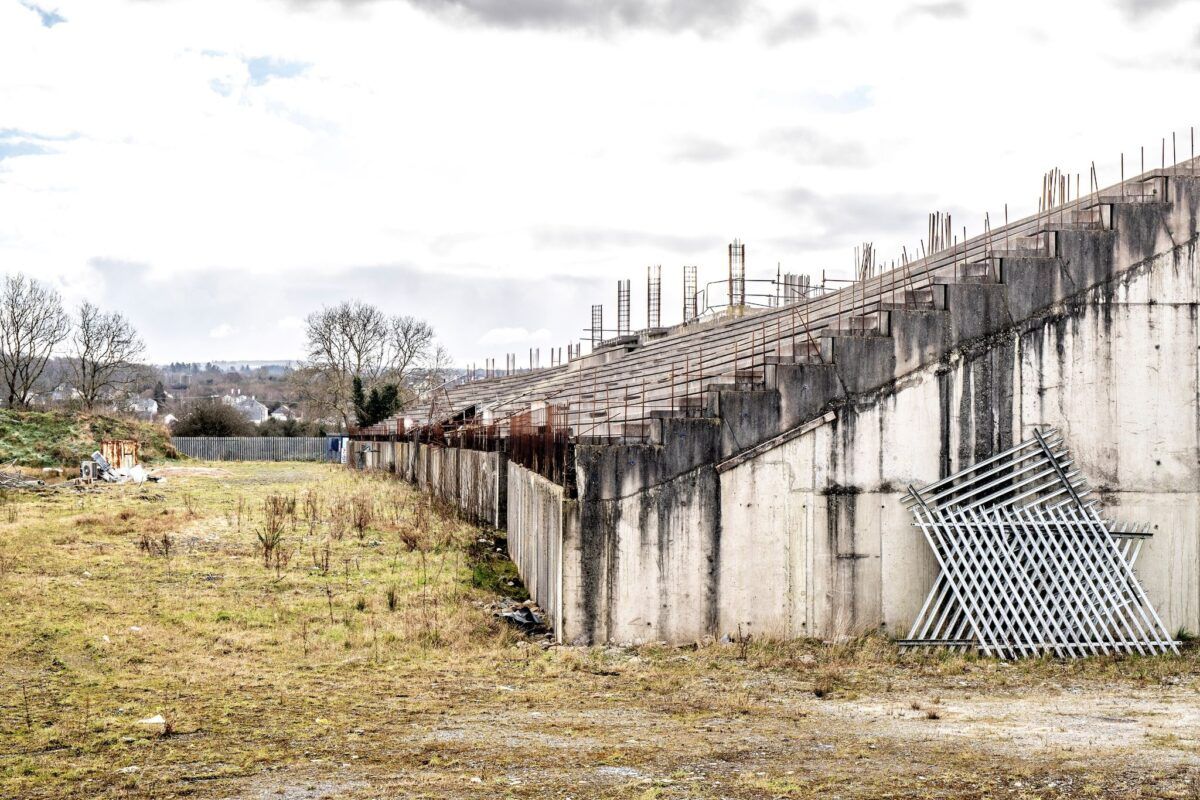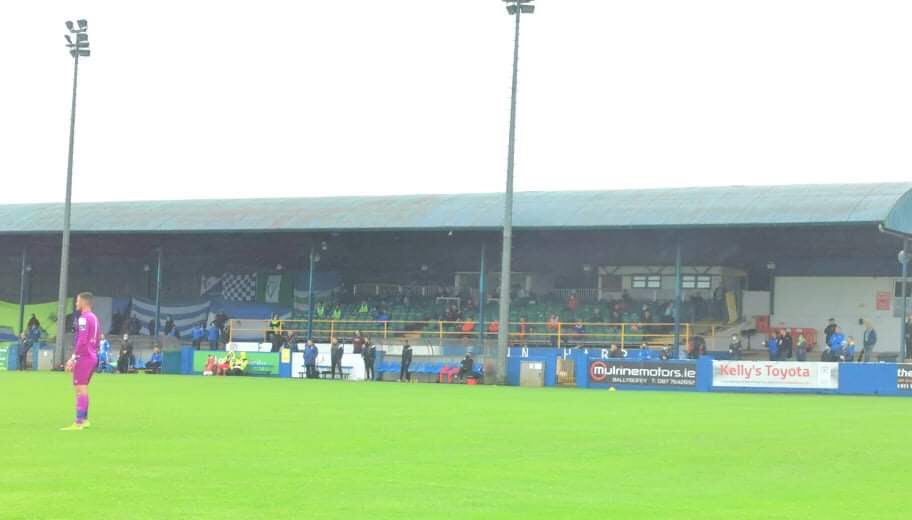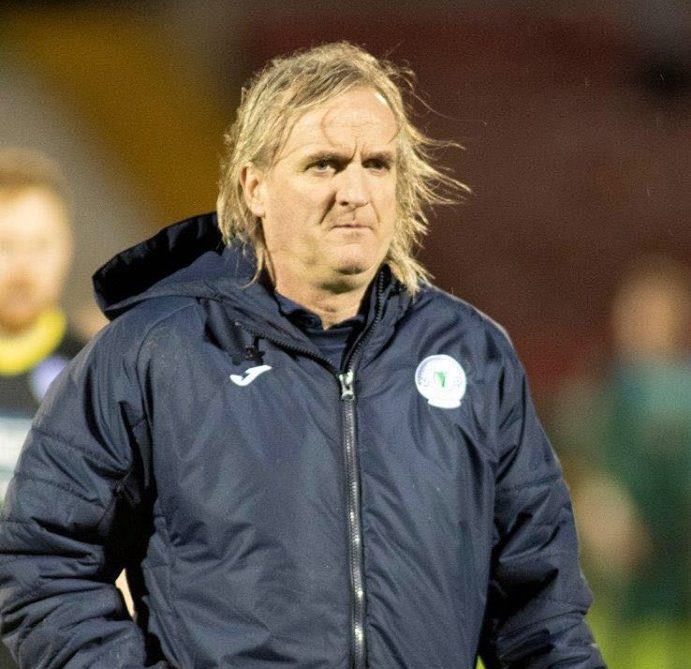THAT news of funding of just shy of €4million being allocated to ‘The Donegal Community Stadium’, the new home for Finn Harps, came on April Fools’ Day seemed sort of apt.
The project to complete a new home for Harps in Stranorlar has hit various bumps, diversions and roadblocks since it was first mooted at an AGM in 2004.
Sceptics wonder if the stadium would ever see completion, even when the cranes went into the Twin Towns sky. It is almost seven years ago now since work halted on the development in 2014. The concrete beginnings of a new main stand have served as a strange sort of concoction between frustration and hope.
Yet, last night’s announcement that some €3.991m was allocated to the FAI under the Large Scale Sport Infrastructure Fund (LSSIF) for the development of the stadium comes as a real shot in the arm – at a time when Harps, two games into the 2021 season, are enjoying the view from the top of the Premier Division,
“The Minister, Catherine Martin, outlined a commitment to Finn Harps, to the FAI and to the football community in Donegal,” says Paul McLoone, Finn Harps’ Stadium Development Officer.

The site of the new stadium in Stranorlar. Picture by North West Newspix
“The Government will be ongoing supporters and backers of the development of the new facilities. Those were the important words. It wasn’t just about the money.
“We’re acutely aware that there is very much a lot of work still to be done – but we know that the Government are firmly behind the initiative.”
A former General Manager at Sligo Hospital and the ex-CEO of North West Ireland Tourism, McLoone was recruited by Harps in 2017 to spearhead the stadium development.
In 2014, the skeleton of a stand was erected and can be seen from the Railway Road, but work halted and has yet to resume.
When, during a spell of high winds in 2019, a crane that was on site collapsed on the partially constructed stand, it felt like yet another sign from somewhere.

Finn Harps Stadium Development Officer Paul McLoone. (North West Newspix)
Behind the scenes, the flame never dulled, though, even if there were fears that €1.2million of previously allocated funding, delivered in separate tranches in 2007 and 2008, would be wasted.
In 2018, the Department issued a €304,000 grant to progress design work and to provide up-to-date costing for completion of the work.
There were further frustrations last year when the project was left off a funding lost from the Department of Transport, Tourism and Sport, when leading figures expected its inclusion.
However, successful backing of bodies such as the Football Association of Ireland and Donegal County Council – who McLoone refers to as ‘key partners’ – helped the light emerge and now Harps hope to kick off in their new abode in 2024.
“Yesterday evening was the first significant signpost that we have passed,” McLoone says.
“We cannot develop good footballers unless we have good facilities.”
McLoone has a vision for the future – and it is an ambitious one.
He talks of a want to retain the existing Finn Park, which he believes could serve some other strands of the club.

A general view of Finn Park. (North West Newspix)
“The new stadium is only a part of the picture,” he says. “We are working on more funding and we will have to raise money privately for this also. We will talk to the corporate and private sectors and involve European agencies. I have a background in working with such grant agencies from health and tourism.
“People talk about this new stadium as a singular thing – but that won’t address our needs. If we’re going to do this, then let’s do it right.
“What the county needs is proper playing facilities. We need more facilities, not less. The stadium, remember, will be one playing surface and that clearly won’t be enough for a club like Finn Harps that could have anything around 16 teams.
“The project will involve three additional pitches as well as the new stadium. We want a complex where we can develop youth, through the work of our academy. We need to mirror the work of the academy by putting in proper facilities. To that end, I do see Finn Park being retained. Maybe not with the spectator facilities that are there at present, but we could certainly make use of it.”

Harps are currently carrying out work on a pitch, known locally as the ‘Waterlane’, not too far from their existing and future grounds. This is intended for use by Ollie Horgan’s senior squad for training purposes.
Currently, Harps use the Finn Valley AC complex and Letterkenny Community Centre for the bulk of their training sessions, but are keen to have a place of their own, while the Finn Harps Academy is poised to pen a new lease on a base in nearby Killygordon.
Horgan’s senior team, the club’s flagship, go to Drogheda tomorrow evening having beaten Bohemians and Dundalk in their opening two matches.
The withdrawal of KN Group as the main sponsor and the absence of a successor on the front of the shirts, certainly arrived as a blow, but Horgan has managed to assemble what appears the Harps squad with a greater depth that most over the last couple of decades.

Finn Harps manager Ollie Horgan. Picture by Joe Boland, North West Newspix
The funding announced yesterday for the new stadium was certainly timely, even if it does represent a shortfall to the estimated €6.7million cost of the project.
Harps, remember, had to shoulder a burden of erecting new portacabins for dressing rooms in order to make Finn Park Covid compliant last year, while the Navenny Street venue requires an annual derogation from the FAI to stage top flight football.
Phase one will see the completion of a 1,900-seater stand, changing rooms, offices, a new pitch and floodlights
“There is a plan and we do have planning permission secured for the competition of the full stadium,” McLoone says.
“My vision is that we can have a centre in the Twin Towns which mirrors the hub strategy of Donegal County Council.
“We need good pitches to develop and we will have to continue our efforts of working with our partners, the Department, the FAI and the Donegal County Council, to deliver. We aim to develop girls and ladies soccer, schoolboys and academy football at a proper centre of excellence.”
Tags:







